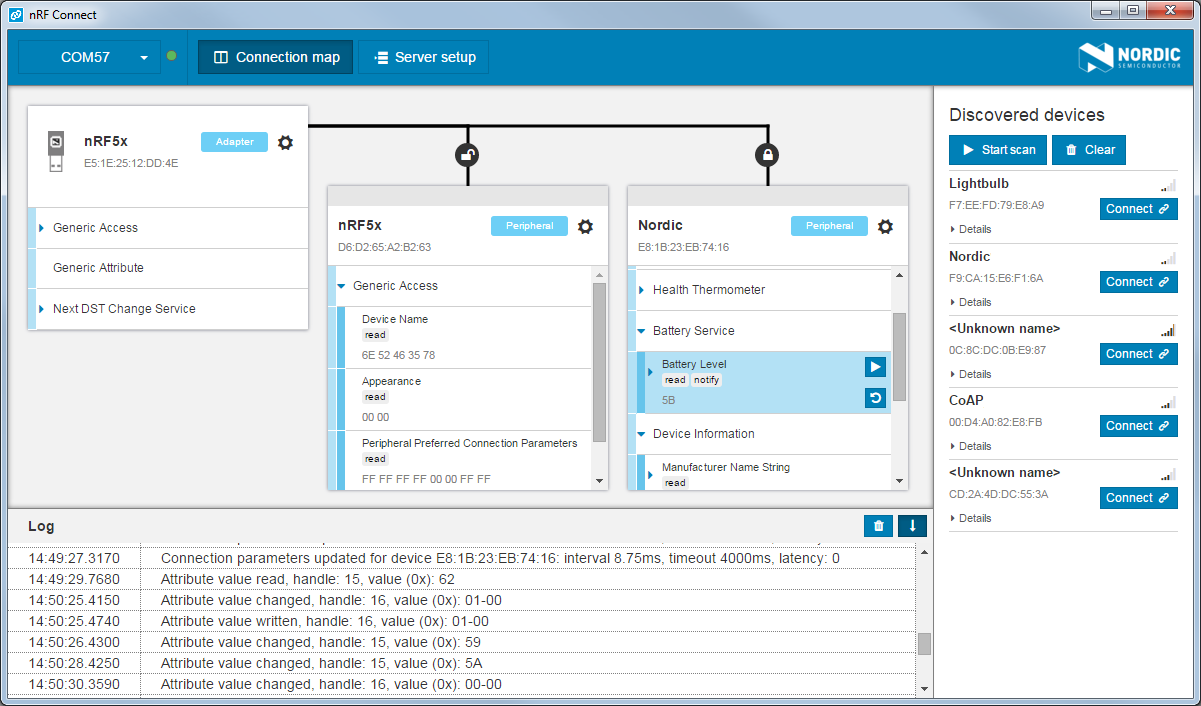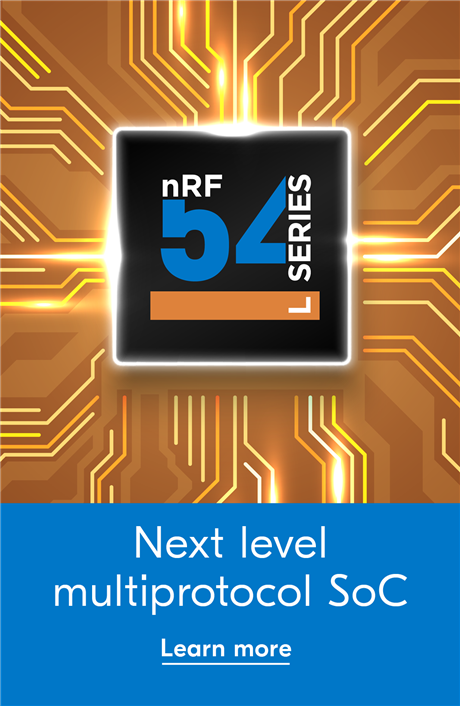Note: This post is outdated. Please go to the product page for nRF Connect for Desktop for updated information and downloads.
nRF Connect is the new official name of the Bluetooth Smart tool previously known as Yggdrasil. We have now reached Release Candidate stage for version 1.0 and it is available for download in this article.
 *New nRF Connect logo*
*New nRF Connect logo*
About nRF Connect
- a tool for Bluetooth Smart (Bluetooth Low Energy) development and testing
- allows you to quickly set up connections with other Bluetooth Smart devices and perform operations on them
- cross platform: runs on Windows, Ubuntu Linux and OSX
 *nRF Connect screenshot*
*nRF Connect screenshot*
RC feedback request
We are shipping the Release Candidate as a separate release before the production v1.0 release because we want to surface as many issues as possible before v1.0 production release. Please share with us if you find anything that seems like a bug. We will focus on bug fixing before the production release, but we are still happy to receive feature requests for future releases.
Please leave your feeback on devzone or send a PM.
Release change log
nRF52 support
- Both nRF51 and nRF52 kits are now supported
- Supported kits: pca10028, pca10031, pca10040
- nRF Connect is now based on the S130/S132 v2.0 SoftDevice versions
Improved UART transport
- Automatic synchronization between PC and nRF5 kit connectivity firmware.
- You do not have to manually reset the board or the application like before
- It is possible to reset the board and change board selection without restarting the application
- Improved error handling and recovery
- We rewrote parts of the transport to make it more robust and to give better error messages
New GAP features
- Security
We put a lot of effort in supporting LE Security introduced in Bluetooth 4.2 as well as LE Legacy Pairing:- LE Security: Just-Works, Passkey, Numerical Comparison, Out-of-band
- LE Legacy Pairing: Just-Works, Passkey, Out-of-band
- Security request with optional auto response
- Bonding (key storage)
- Up to 8 concurrent Bluetooth Smart connections
- Max 8 concurrent central connections
- Max 1 peripheral connection
New GATT features
- GATT server Long Write (Prepare and Execute Write)
- An issue in the previous release caused Long Write to be unavaible. This has been resolved, meaning Long Write and Long Read are now available for both GATT Server and GATT Client.
UI change
- The Device Details and Connection Map tabs available in v0.9.0 have been consolidated into one tab named Connection Map. We did this because having two almost identical tabs did not give much extra benfit.
Known issues/limitations
- It is only possible to apply server setup once per session. The board will have to be reset before adding a new server setup. This is due to an inherent SoftDevice feature/limitation.
- When a kit serial port has been selected, selcting the same serial port again will make the application crash.
- Device address resolving is currently not supported.
- When running on OSX 10.11.3 there seems to be problem with getting the application to list the serial ports. Use OSX 10.11.4 or newer.
- On OSX there seems to be a problem running multiple concurrent instances of nRF Connect
OSX Segger issue
On OSX there is a problem with making the Segger firmware working correctly due to USB packet sizes.
There are two solutions to this problem:
Correction: In this release, v1.0 RC, the only supported workaround is option 2 below:
Still use the Segger firmware, but disable some of the features. Instructions are available here.- Change firmware on the Debug probe to mbed DAPLink firmware. Get the file from the download section
- To enter bootloader mode, power off the nRF Development Kit, press IF BOOT/RESET and power on the kit. Now drop the nrf5x_osx_fix.bin file to the BOOTLOADER device.
- If you want to revert back to Segger firmware you have to download the Segger firmware from this location.
Roadmap
Release v1.0
Shortly after RC release we will start preparing the 1.0 production version.
Source code on GitHub
At the same time of releasing the 1.0 production version we will also make the source code of nRF Connect available on GitHub, complete with build instructions.
File downloads
Application installer/zip files
Download the file for your system, install or unpack and run the application:
Connectivity firmware
nRF Connect requires a connectivity firmware to be programmed to the development kit or dongle. Either use a tool like nrfjprog to program or simply drag and drop the file to the JLINK drive of the kit.
The hex files are available in the nRF Connect application hex folder, or click the link for direct download:
- nRF51: <application folder>/hex/connectivity_115k2_with_s130_2.0.1.hex
- nRF52: <application folder>/hex/connectivity_115k2_with_s132_2.0.1.hex
Firmware for OSX issue
See description under known issues.


